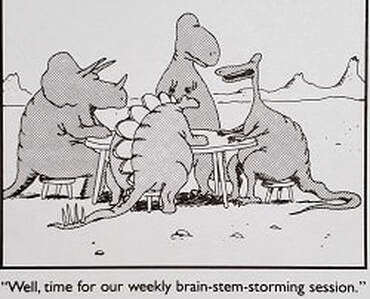Brainstorm
 Remember pre-Covid meetings or problem-solving or planning sessions which involved brainstorming? Flipcharts were posted, lists generated, ideas fly back and forth without judgment or discussion. Or maybe you’ve tried brainstorming via Zoom. Lots of information is (or can be) generated. But then what do you do with all this brainstormed information?
Remember pre-Covid meetings or problem-solving or planning sessions which involved brainstorming? Flipcharts were posted, lists generated, ideas fly back and forth without judgment or discussion. Or maybe you’ve tried brainstorming via Zoom. Lots of information is (or can be) generated. But then what do you do with all this brainstormed information?Brainstorming is usually just a first step of a problem-solving (or problem-setting) process. Consider the four steps of the BORC method: First, Brainstorm. Then Organize data into related clusters. Then Reflect (what’s going on in each cluster? What are underlying issues? What’s a tentative title for each cluster of data? Where are we headed with this discussion? What insights?). Finally, Consolidate: What implications? What actions? What next steps?
The word brainstorm, from 1861, originally meant “a fit of acute delirious mania or a sudden dethronement of reason and will; under stress of strong emotion; usually accompanied by manifestations of violence” (Brainstorm, Online Etymological Dictionary).
The use of the word brainstorm to mean a brilliant idea or mental excitement is from 1934. The July 1936 edition of the Popular Mechanics magazine described ‘brainstorm boys’ as “the daring and hair-trigger thinking of the men who handle the big news breaks and special programs” in the early days of radio broadcasting.
The use of brainstorm meaning to make a concerted attack on a problem involving the spontaneous generation of ideas is from 1947.
The word storm has its origins in PIE stur-mo (storm) and (s)twer (to turn, to whirl).
Reference: Online Etymological Dictionary, https://www.etymonline.com/
Published on February 26, 2021 16:57
No comments have been added yet.



